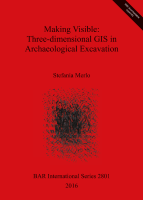Description
This book discusses the theoretical aspects and practical applications of GIS for intra-site analysis in archaeology. It has been previously argued that GIS is unable to manipulate three-dimensional data and therefore to represent an archaeological excavation, since three-dimensionality is the main characteristic of the excavated record. This book explores the extent to which archaeological data and GIS structures parallel one another and, through this discussion, it challenges ideas around the ability of the traditional archaeological record to represent multidimensional spaces. The book then argues that three-dimensional data and the use of modelling techniques in a three-dimensional GIS allow for a better and more nuanced understanding of the excavated archaeological record. Practical examples are provided from two specific excavation scenarios: the Neolithic site of Kouphovouno in Greece and the Mesolithic to Early Neolithic Hoge Vaart excavation in the Netherlands. A conceptual framework for representing spatial (and temporal) excavation information is outlined, and provides a blueprint for creating a model for storing, manipulating and analysing archaeological excavation data.
AUTHORStefania Merlo is an archaeologist and teaches GIS in the School of Geography, Archaeology and Environmental Studies of the University of the Witwatersrand (Johannesburg, South Africa). She completed a BA in Classics at the University of Padova in 2000, followed by an MPhil and PhD from the University of Cambridge. Her research focuses on understanding the transformations of cultural landscapes through long-term, multidimensional models that incorporate large datasets on environment, culture and society with the use of quantitative and computational methods, in particular geographic information systems and remote sensing. Her areas of interest are the arid landscapes of Southern Libya, Algeria, Botswana and South Africa, where she has conducted fieldwork in the past years and documented settlement strategies from the first millennium AD to the present. More recently, she has worked at the development of participatory GIS approaches for the documentation of the recent past in the island of Mograt (Sudan) and at the integration of cultural information in national spatial data infrastructures that are used for decision making and national development policies in Southern Africa.











